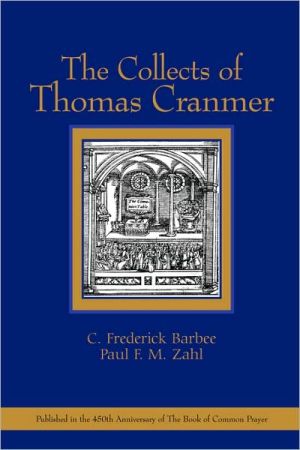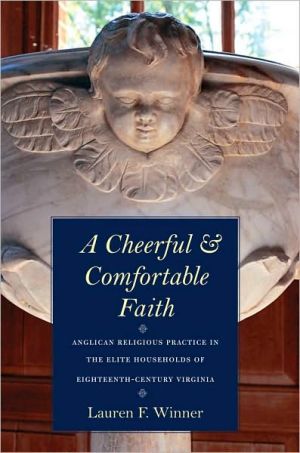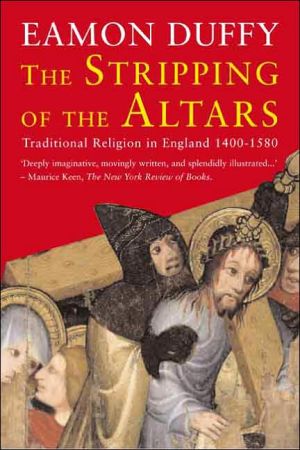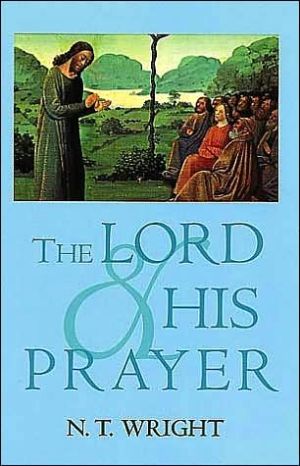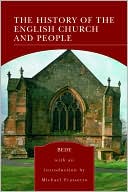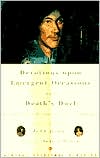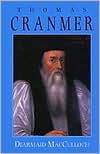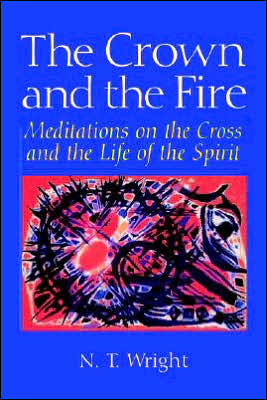Oxford Guide to the Book of Common Prayer: A Worldwide Survey
The Oxford Guide to the Book of Common Prayer is the first comprehensive guide to the history and usage of the original Book of Common Prayer and its variations. Expert contributors from around the world and from every major denomination offer an unparalleled view of The Book of Common Prayer and its influence.\ The Oxford Guide to Common Prayer is more than simply a history: it describes how Anglican churches at all points of the compass have developed their own Prayer Books and adapted the...
Search in google:
The Book of Common Prayer runs like a golden thread through the history of the Church of England and the worldwide Anglican Communion. The Oxford Guide to the Book of Common Prayer is the first comprehensive guide to the history and usage of the original Book of Common Prayer and its numerous descendants throughout the world. It shows how a seminal text for Christian worship and devotion has inspired a varied family of religious resources that have had an influence far beyond their use in the churches of a single tradition. The Guide is unique. In it, experts from every part of the globe and every branch of Anglicanism, as well as from the Lutheran, Roman Catholic, Methodist, and Unitarian traditions, provide an unparalleled examination of The Book of Common Prayer and its lineage. Much more than simply a history, this volume describes how Anglican churches at all points of the compass have developed their own Prayer Books and adapted the time-honored Anglican liturgies to their diverse local cultures. In the dozens of editions now in use throughout the world, the same texts—Daily Prayers, the Eucharist, Marriage and Funerals, and many others—resemble each other, and yet differ from each other in interesting ways. A brief look at "electronic Prayer Books" offers a glimpse at how this story of development and adaptation may continue in the Information Age. From 1549 to the twenty-first century, The Oxford Guide to the Book of Common Prayer offers a fascinating journey through the history and development of a classic of world literature. "A wonderful and useful book. This book asks all the important questions and provides essential material for those who are looking for answers."—(The Rev.) Christopher Webber, The Living Church"It is well conceived physically, graced with both illustrations of historic prayer books and text boxes from the liturgies being discussed, which are a significant help to the reader. This authoritative guide to the Book of Common Prayer as it once was and has now become will well serve anyone interested in Anglicanism or the prayer book tradition."—Christian Century"The editors have assembled a roster of authors that is a veritable who's who among Anglican liturgical scholars. [They] have provided a service to the entire Communion by editing this worldwide survey of the Book of Common Prayer."—Frank C. Senn, Anglican Theological Review"Hefling and Shattuck have kept a tight hand; they have maintained narrative interest, eliminated overlaps, discreetly filled holes themselves. Excerpts from specimen prayers and documents are given in boxes on the page. In a big book, room has been found for thirty black-and-white illustrations, a chronology, a glossary, a bibliography, a good index, and a world map in the endpapers."—John Whale, Times Literary Supplement"Monumental and magnificent! This Guide makes clear why The Book of Common Prayer is both a religious and a literary masterpiece."—Phyllis Tickle Publishers Weekly This new reference work, edited by Boston College professor Hefling and Church Publishing v-p Shattuck, traces the many revisions that the Anglican Book of Common Prayer has undergone and examines the sundry versions of the prayer book used in different countries. (After the American Revolution, for example, Episcopalians in the new United States omitted the prayers for the British king.) Varied liturgies for weddings, argues Gillian Varcoe, show how Anglicans in different times and places responded to culturally specific pressures and changing social understandings about marriage. Throughout, the contributors underscore that "Anglicans do their theology in the context of worship." Given the current energy swirling around the concept of a worldwide Anglican communion, and the West's increased attention to churches in the southern hemisphere, the essays on prayer books in Africa and Asia are especially welcome. Concluding pieces hazard some guesses-sometimes a tad whimsically-about the future of common prayer. What do technological changes mean for the prayer book? Word processors have allowed churches to produce Sunday bulletins, rendering actual books unnecessary. Maybe one day soon, Sunday worshippers will read the liturgy from Palm Pilots or BlackBerry devices. This rich volume is sure to become the definitive source for studies of the Book of Common Prayer. (June) Copyright 2006 Reed Business Information.
\ Publishers WeeklyThis new reference work, edited by Boston College professor Hefling and Church Publishing v-p Shattuck, traces the many revisions that the Anglican Book of Common Prayer has undergone and examines the sundry versions of the prayer book used in different countries. (After the American Revolution, for example, Episcopalians in the new United States omitted the prayers for the British king.) Varied liturgies for weddings, argues Gillian Varcoe, show how Anglicans in different times and places responded to culturally specific pressures and changing social understandings about marriage. Throughout, the contributors underscore that "Anglicans do their theology in the context of worship." Given the current energy swirling around the concept of a worldwide Anglican communion, and the West's increased attention to churches in the southern hemisphere, the essays on prayer books in Africa and Asia are especially welcome. Concluding pieces hazard some guesses-sometimes a tad whimsically-about the future of common prayer. What do technological changes mean for the prayer book? Word processors have allowed churches to produce Sunday bulletins, rendering actual books unnecessary. Maybe one day soon, Sunday worshippers will read the liturgy from Palm Pilots or BlackBerry devices. This rich volume is sure to become the definitive source for studies of the Book of Common Prayer. (June) Copyright 2006 Reed Business Information.\ \ \ \ \ Library JournalHefling (systematic theology, Boston Coll.) and Shattuck (vice president & editorial director, Church Pub.) have compiled essays on the origin and evolution of The Book of Common Prayer. First created in England in 1549, this prayer book was eventually taken to the far reaches of the British Empire. Today, Anglicans use a "family of prayer books" based on the original text. Written by a diversity of experts, the essays cover indigenous prayer books in Africa, Asia, Europe, North and South America, and other areas and discuss how diverse and sundry cultures have impacted their content. For example, prayer books in Africa have incorporated African mourning rituals into their funeral rites, and Myanmar prayer books include Buddhist ideas in communion services. The essays even address electronic or "e-prayer books" for the 21st century. Although dozens of worldwide editions are in circulation, the same central texts are used (e.g., daily prayers, the Eucharist). The guide is enhanced with illustrations and sidebars as well as a chronology (1535-2004), a glossary, a select bibliography, and, of course, an index. Librarians will have difficulty deciding whether to place this in the circulating or reference collections-or perhaps both. Recommended for academic and special libraries.-C. Brian Smith, Arlington Heights Memorial Lib., IL Copyright 2006 Reed Business Information.\ \

